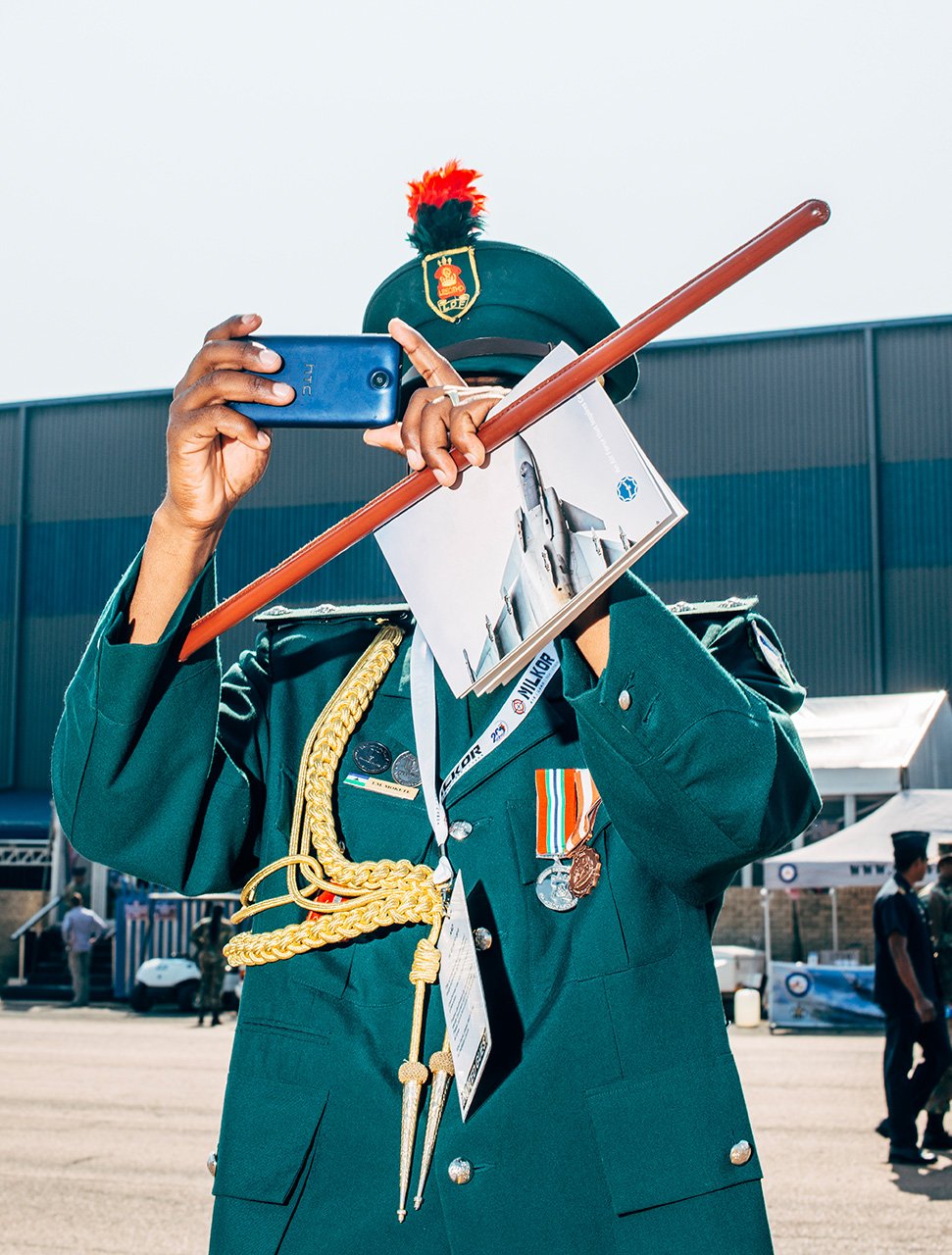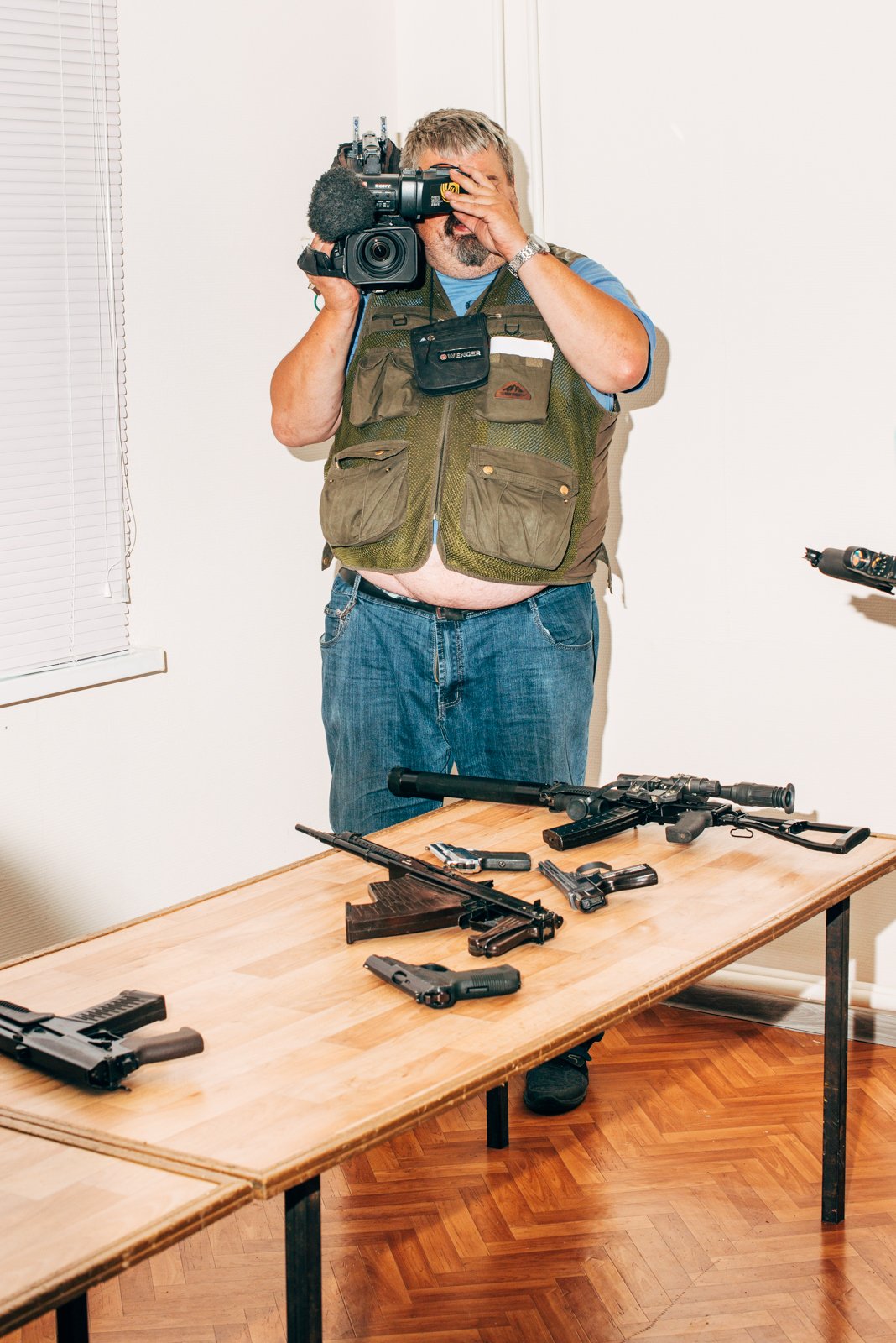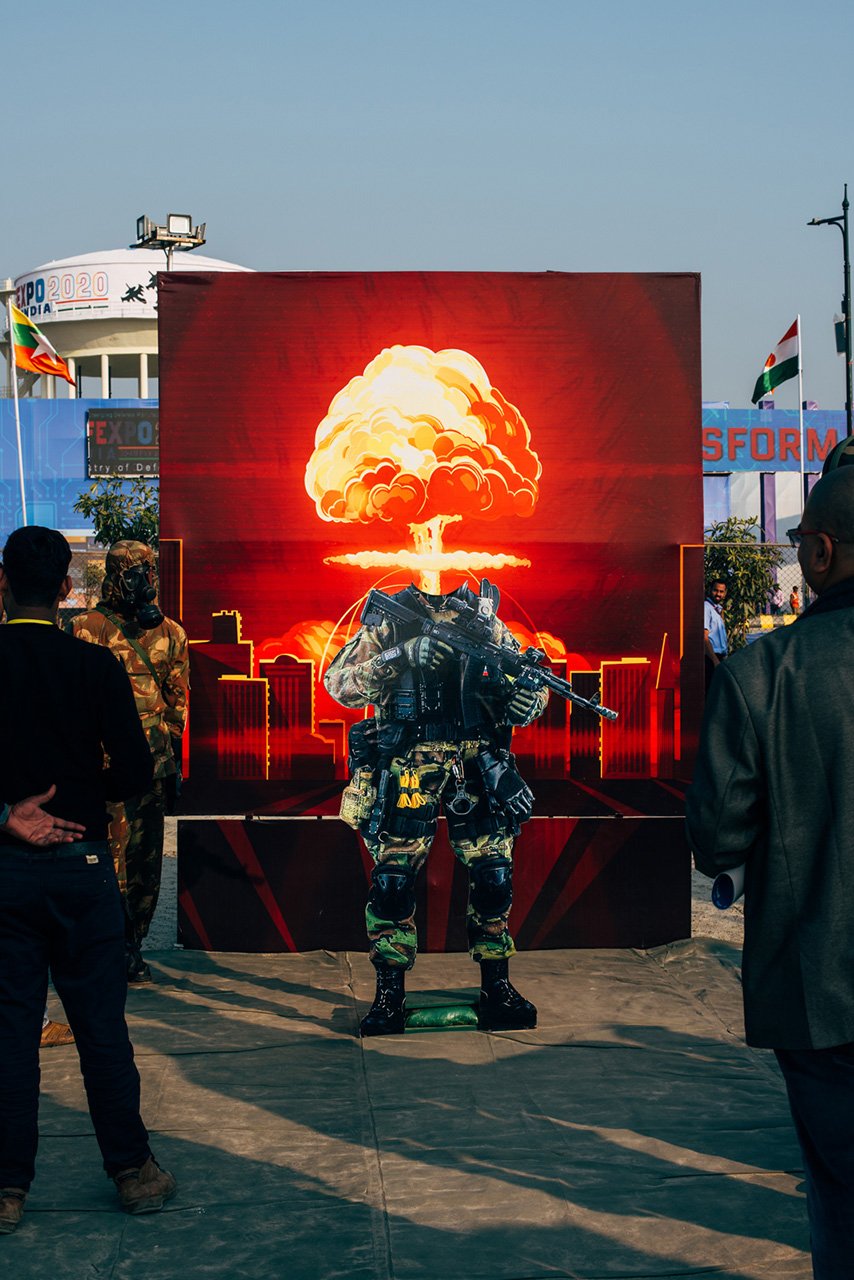“Nothing Personal” by Nikita Teryoshin
The banality of evil. It's a famous—and frought—term about seemingly ordinary people living humdrum lives whose actions result in shocking atrocities. This is a fitting frame of mind to keep when viewing Nikita Teryoshin's photo series "Nothing Personal - The Back Office Of War," which follows the business of death across the globe via the trade show circuit. It's a world of bland hotels, buffet tables, and selfie-takers with the resulting destruction and violence of their products kept at a far distance, safely hidden in the abstract.
Over the course of six years, the Russian-born photographer traveled from South Africa to Belarus to China and more, capturing the very mundane settings of the global arms market at these “Defence Fairs”. Weapons dealers and military contractors rub shoulders in these surreal settings, wheeling and dealing the latest guns and tech. Frumpy salespeople grab a quick lunch while trying to land deals on the phone. Generals in oversized uniforms snap cameraphone pics as if taking family vacation photos. Attendees drink stale coffee in styrofoam cups, employees nod off, and spare missiles are tucked away in closets next to regular office supplies.
It's easily mistakable for any other dreary trade show at a random airport hotel peddling your everyday goods, but instead it’s Predator drones, intercontinental missiles, and machine guns. The closest this world gets to the action is fiery weapons displays on gun ranges and testing grounds, which viewers watch from the safe comfort of plastic chairs and aluminum bleachers.
Teryoshin purposefully avoids capturing anyone's face, so as not to signal any one person out. This adds to the comfortable distance of this dull world from the real-world violence it revolves around, as if the cropping were a mask to hide behind. It results in poignant compositions too. Officials and dealers shake hands with their heads cropped out, lending a sense of mystery and shadiness to the moment. A man rests his face in a viewing box as if he were a clown target at a carnival.
The absurdity of the whole series creates a comical atmosphere to much of the series, further distancing the proceedings from the reality of what these weapons and tools are meant for. The people here seem exceedingly regular. They could be your average suburban dad commuting to the office in a bad suit. And perhaps that's what makes it so easy for them to continue with their work. It begs the question, are they bad people? Are they evil? Ultimately, that doesn't matter. Their actions are what counts. Even if they busy themselves with accounting and bury their heads in paperwork, they're still profiting off the military industrial complex.















